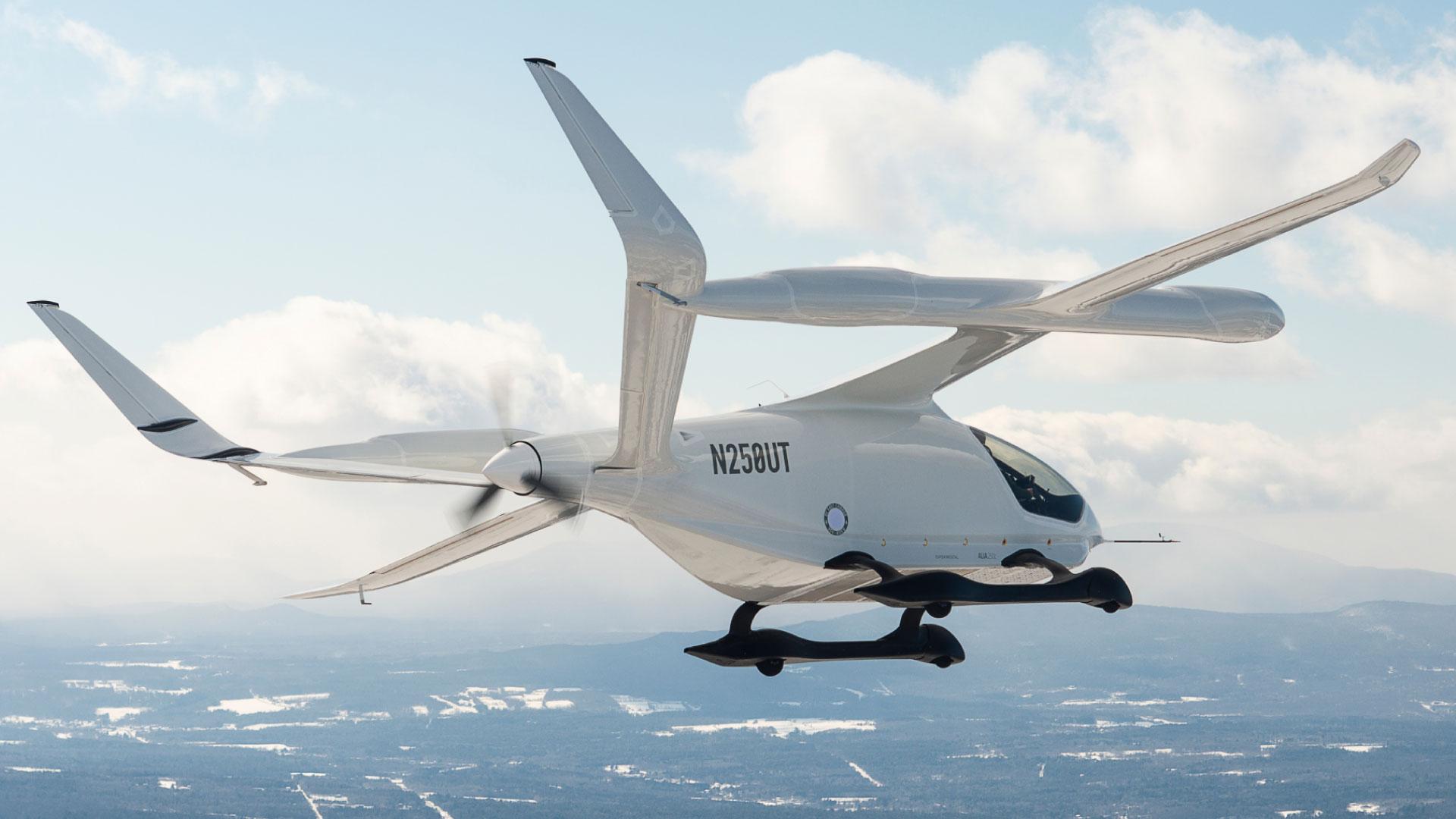
FAA Part 23 certification and first deliveries of the CX300 are targeted for 2025.
Beta Technologies surprised the advanced air mobility industry with its recently announced plan to launch a conventional-takeoff-and-landing (CTOL) version of its Alia-250 prior to launching the vertical-takeoff-and-landing (VTOL) version, but within the company the shift was conceived nearly a year ago, Beta CEO Kyle Clark tells the AAM Report in an exclusive interview.
The seed of the idea for the fixed-wing CX300 was planted in early 2022 while the Vermont-based startup was performing demonstration flights for customers with its Alia-250 prototype in a CTOL configuration, Clark says. One of those customers approached him during a flight demo and asked if the company could simply sell the Alia-250 in its then-current CTOL configuration rather than force customers to wait around for the technology and regulations to mature enough to enable the VTOL version.
“That was a tipping point for me in realizing that if the economics work for just the CTOL aircraft–which they do very nicely–it’s a very salable product,” Clark says. “There are really two things our customers look for—low operating costs and sustainability. It turns out we can do both really well with CTOL, and we don’t have to get really complicated with new rulemakings or operational ideas either.”
Clark says Beta was initially concerned about whether the FAA would approve of the company pursuing two concurrent aircraft certifications. But the agency’s Aircraft Certification Office was satisfied after learning that both configurations share a vast majority of components and systems, including the same wing, tail, fuselage, avionics and interiors.
By going with the conventional design first, Beta can realize a much easier path to certification under Part 23 than a VTOL aircraft would under Part 21.17b. “The reality is it’s just a lower-friction path to both type certification and operational certification for CTOL aircraft,” Clark says. “It’s a really cut-and-dry path to certification and it makes for really a no-waste program with an earlier path to market.”
From a customer standpoint, Clark also thinks that operators will find it easier to gain experience with CTOL aircraft before transitioning to VTOL, which adds complexity related to operating rules, infrastructure, pilot licensing, training and maintenance.
“A CTOL aircraft allows our customers to learn what it’s like to charge, discharge, work on electric aircraft, manage capabilities and understand costs, all in a very low-barrier-of-entry form,” Clark says. “It’s really a very logical, pragmatic steppingstone for them before moving on to VTOL.”
Beta also plans to certify its electric motor as a standalone product under FAA Part 33 rules at least a year in advance of the CX300 aircraft type certification, Clark says. Certifying the motor first will give the company experience and credibility with the FAA’s processes, enable the company to reuse it in different aircraft designs and applications, and allow the motor to be sold to other OEMs for use in different electric aircraft programs, he explained. Beta is also certifying its five-bladed propeller under FAA Part 35 rules.
“We are well beyond the certification basis and means of compliance, and now we have conforming systems for the motors under test,” Clark says. “There are still several steps left, but we’re on track with the motor to be certified more than a year in advance of the CTOL aircraft.”

Comments